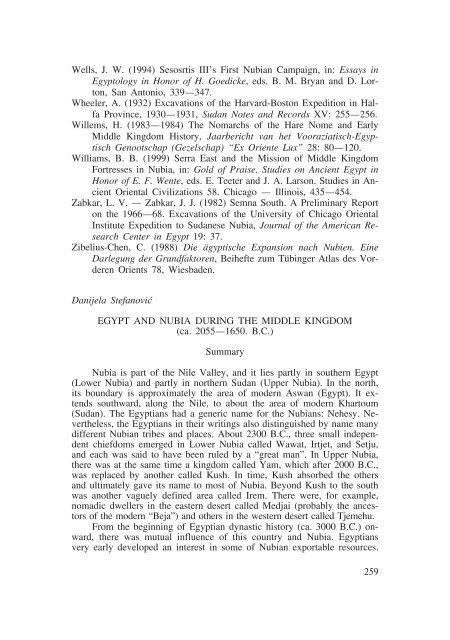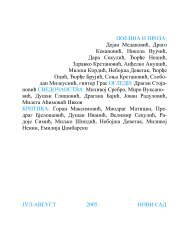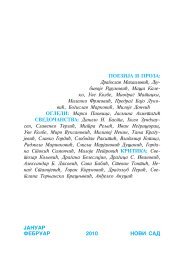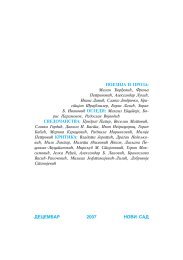You also want an ePaper? Increase the reach of your titles
YUMPU automatically turns print PDFs into web optimized ePapers that Google loves.
Wells, J. W. (1994) Sesosrtis III's First Nubian Campaign, in: Essays in<br />
Egyptology in Honor of H. Goedicke, eds. B. M. Bryan and D. Lorton,<br />
San Antonio, 339—347.<br />
Wheeler, A. (1932) Excavations of the Harvard-Boston Expedition in Halfa<br />
Province, 1930—1931, Sudan Notes and Records XV: 255—256.<br />
Willems, H. (1983—1984) The Nomarchs of the Hare Nome and Early<br />
Middle Kingdom History, Jaarbericht van het Vooraziatisch-Egyptisch<br />
Genootschap (Gezelschap) “Ex Oriente Lux" 28: 80—120.<br />
Williams, B. B. (1999) Serra East and the Mission of Middle Kingdom<br />
Fortresses in Nubia, in: Gold of Praise. Studies on Ancient Egypt in<br />
Honor of E. F. Wente, eds. E. Teeter and J. A. Larson. Studies in Ancient<br />
Oriental Civilizations 58. Chicago — Illinois, 435—454.<br />
Zabkar, L. V. — Zabkar, J. J. (1982) Semna South. A Preliminary Report<br />
on the 1966—68. Excavations of the University of Chicago Oriental<br />
Institute Expedition to Sudanese Nubia, Journal of the American Research<br />
Center in Egypt 19: 37.<br />
Zibelius-Chen, C. (1988) Die ägyptische Expansion nach Nubien. Eine<br />
Darlegung der Grundfaktoren, Beihefte zum Tübinger Atlas des Vorderen<br />
Orients 78, Wiesbaden.<br />
Danijela Stefanoviã<br />
EGYPT AND NUBIA DURING THE MIDDLE KINGDOM<br />
(ca. 2055—1650. B.C.)<br />
Summary<br />
Nubia is part of the Nile Valley, and it lies partly in southern Egypt<br />
(Lower Nubia) and partly in northern Sudan (Upper Nubia). In the north,<br />
its boundary is approximately the area of modern Aswan (Egypt). It extends<br />
southward, along the Nile, to about the area of modern Khartoum<br />
(Sudan). The Egyptians had a generic name for the Nubians: Nehesy. Nevertheless,<br />
the Egyptians in their writings also distinguished by name many<br />
different Nubian tribes and places. About 2300 B.C., three small independent<br />
chiefdoms emerged in Lower Nubia called Wawat, Irtjet, and Setju,<br />
and each was said to have been ruled by a “great man". In Upper Nubia,<br />
there was at the same time a kingdom called Yam, which after 2000 B.C.,<br />
was replaced by another called Kush. In time, Kush absorbed the others<br />
and ultimately gave its name to most of Nubia. Beyond Kush to the south<br />
was another vaguely defined area called Irem. There were, for example,<br />
nomadic dwellers in the eastern desert called Medjai (probably the ancestors<br />
of the modern “Beja") and others in the western desert called Tjemehu.<br />
From the beginning of Egyptian dynastic history (ca. 3000 B.C.) onward,<br />
there was mutual influence of this country and Nubia. Egyptians<br />
very early developed an interest in some of Nubian exportable resources.<br />
259

















